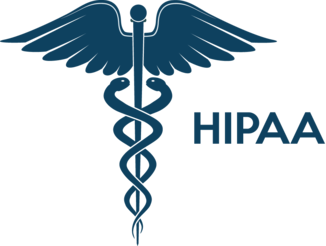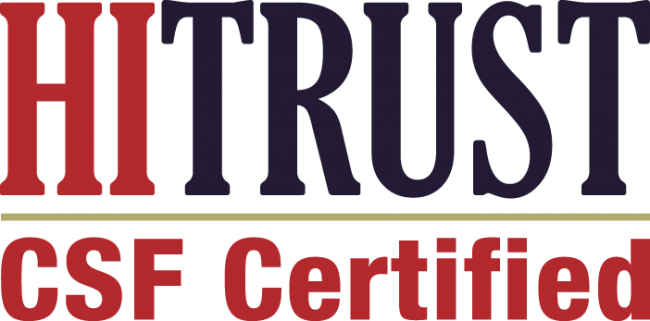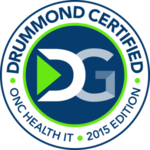The healthcare landscape has undergone a dramatic transformation in recent years, with telehealth emerging as a cornerstone of modern medical practice. As we navigate through 2025, the integration of telehealth services with robust referral management systems has become not just an operational necessity but a critical component in delivering comprehensive care to patients across the United States, particularly in remote and underserved communities.
The Current State of Telehealth in America
The statistics paint a compelling picture of telehealth’s growing prominence in American healthcare. According to recent data, 25% of adults report having utilized telehealth services in the past month, while an impressive 78% are likely to complete a medical appointment via telehealth again. This represents a significant shift from pre-pandemic levels, where telehealth usage was minimal compared to today’s adoption rates.
The telehealth market has experienced unprecedented growth, with usage jumping from a mere 0.15% of all medical claims in March 2019 to 7.52% in March 2020 during the peak of the pandemic. While usage has stabilized to 4.82% of all medical claims as of May 2024, this still represents a more than 30-fold increase from pre-pandemic levels, demonstrating the permanent role telehealth has carved out in modern healthcare delivery.
The Referral Challenge in Traditional Healthcare
Healthcare referrals have historically been fraught with inefficiencies, communication gaps, and delayed care coordination. In traditional healthcare settings, patients often face:
- Fragmented Communication: Information silos between primary care providers and specialists
- Delayed Appointments: Extended wait times for specialist consultations
- Lost Documentation: Critical patient information is getting lost in translation between providers
- Geographic Barriers: Limited access to specialists in rural and underserved areas
- Patient Confusion: Unclear referral processes leading to missed appointments and discontinued care
These challenges become even more pronounced in remote and underserved areas, where patients may need to travel hundreds of miles to see a specialist, creating significant barriers to accessing quality healthcare.
The Revolution of Seamless Referral Workflows
Modern telehealth platforms have revolutionized the referral process by creating seamless, integrated workflows that connect primary care providers with specialists in real time. These platforms leverage several key technologies:
Electronic Health Record (EHR) Integration
The integration of telehealth services with electronic health records has created a transformative flow of information throughout the healthcare ecosystem. This integration ensures that patient data, medical history, and treatment plans are instantly accessible to all relevant healthcare providers, eliminating the traditional barriers that have long plagued the referral process.
Real-Time Communication Systems
Advanced telehealth platforms now incorporate secure messaging systems, video conferencing capabilities, and collaborative care tools that enable instant communication between healthcare providers. This real-time connectivity ensures that referrals are not only processed quickly but also include rich contextual information about the patient’s condition and treatment history.
Automated Workflow Management
Modern referral management systems automate many of the administrative tasks that previously caused delays. These systems can automatically schedule appointments, send reminders to patients, track referral status, and ensure that all necessary documentation is properly transferred between providers.
Impact on Remote and Underserved Areas
The transformation has been particularly significant in remote and underserved communities, where access to specialist care has historically been limited. Telehealth integration has addressed several critical challenges:
Bridging Geographic Gaps
Telehealth platforms have effectively eliminated the geographic barriers that once prevented patients in rural areas from accessing specialized care. Patients can now consult with specialists from major medical centers without leaving their local communities, dramatically improving access to quality healthcare.
Reducing Healthcare Disparities
Studies have demonstrated that telehealth interventions are not only feasible and accepted in rural, underserved populations but also significantly improve access to care. The technology has proven particularly effective in addressing healthcare disparities by providing consistent, high-quality care regardless of geographic location.
Strengthening Local Healthcare Infrastructure
Rather than replacing local healthcare providers, telehealth integration has strengthened the role of community health centers and local clinics. These facilities now serve as telehealth hubs, providing the necessary infrastructure for remote consultations while maintaining the personal touch of local healthcare delivery.
The Role of Advanced Telehealth Platforms
Leading telehealth and virtual care platforms have recognized the critical importance of seamless referral workflows and have developed sophisticated solutions to address these needs:
Comprehensive Care Coordination
Modern platforms provide comprehensive care coordination tools that track patient journeys from initial consultation through specialist referrals and follow-up care. This end-to-end visibility ensures that no patient falls through the cracks and that all healthcare providers remain informed about the patient’s progress.
Intelligent Referral Matching
Advanced platforms use intelligent algorithms to match patients with the most appropriate specialists based on their specific conditions, location, insurance coverage, and availability. This smart matching reduces wait times and ensures that patients receive care from providers best suited to address their needs.
Quality Assurance and Outcomes Tracking
Integrated platforms provide robust quality assurance tools that track patient outcomes, measure provider performance, and identify opportunities for improvement. This data-driven approach ensures that the referral process continuously improves over time.
Current Policy Landscape and Future Considerations
As we move toward October 2025, healthcare organizations face what has been termed the “telehealth policy cliff.” Current Medicare policies allow Federally Qualified Health Centers (FQHCs) and Rural Health Clinics (RHCs) to serve as Medicare distant site providers for non-behavioral/mental telehealth services through September 30, 2025. This policy environment has created urgency for healthcare organizations to develop sustainable telehealth practices that can continue to serve patients effectively regardless of regulatory changes.
Healthcare organizations are now focusing on building sustainable telehealth practices by establishing clear roles and responsibilities among staff, evaluating workflow changes, and determining whether dedicated telehealth teams are necessary. This infrastructure development is crucial for maintaining the seamless referral workflows that have become essential to modern healthcare delivery.
Measuring Success: Key Performance Indicators
The success of integrated telehealth referral workflows can be measured through several key performance indicators:
Patient Satisfaction Metrics
Studies show that 99% of patients participating in hospital-at-home programs report satisfaction with their care experience. This high satisfaction rate demonstrates the effectiveness of well-integrated telehealth systems in meeting patient needs.
Access and Utilization Rates
The dramatic increase in telehealth utilization—from virtually zero to nearly 5% of all medical claims—demonstrates the platform’s effectiveness in improving healthcare access. This is particularly significant in rural and underserved areas where traditional healthcare options were limited.
Care Coordination Efficiency
Integrated platforms have significantly reduced the time between referral initiation and specialist consultation, with many systems enabling same-day or next-day specialist consultations that would have previously required weeks or months to arrange.
Overcoming Implementation Challenges
While the benefits of seamless referral workflows are clear, healthcare organizations face several implementation challenges:
Technology Infrastructure
Successful telemedicine implementation requires robust technology infrastructure, including reliable internet connectivity, appropriate hardware, and user-friendly platforms. This is particularly challenging in rural areas where internet connectivity may be limited.
Staff Training and Digital Literacy
The effectiveness of telehealth platforms depends heavily on the digital literacy of both healthcare providers and patients. Organizations must invest in comprehensive training programs to ensure that all stakeholders can effectively use the technology.
Regulatory Compliance
Healthcare organizations must navigate complex regulatory requirements while implementing telehealth solutions. This includes ensuring compliance with HIPAA privacy requirements, state licensing laws, and Medicare/Medicaid reimbursement policies.
Looking Ahead: The Future of Telehealth Integration
As we look toward the future, several trends are shaping the evolution of telehealth integration:
Expanded Scope of Services
Telehealth platforms are expanding beyond traditional consultation services to include remote monitoring, chronic disease management, and preventive care services. This expansion requires even more sophisticated referral and care coordination systems.
Integration with Social Determinants of Health
Future platforms will increasingly integrate social determinants of health data to provide more comprehensive care coordination, ensuring that referrals address not only medical needs but also social and economic factors that impact patient health.
Best Practices for Healthcare Organizations
Healthcare organizations looking to implement or improve their telehealth referral workflows should consider the following best practices:
Start with a Comprehensive Assessment
Before implementing new systems, organizations should conduct a thorough assessment of their current referral processes, identifying pain points and opportunities for improvement.
Prioritize Interoperability
Choose platforms that offer robust integration capabilities with existing EHR systems and other healthcare technologies. Interoperability is crucial for creating truly seamless workflows.
Focus on User Experience
Both patient and provider experiences should be central to platform selection and implementation. User-friendly interfaces and intuitive workflows are essential for successful adoption.
Invest in Training and Support
Comprehensive training programs and ongoing technical support are crucial for successful implementation. This includes training for both healthcare providers and administrative staff.
Monitor and Measure Performance
Implement robust performance monitoring systems to track key metrics and identify opportunities for continuous improvement.
The Bottom Line
The integration of telehealth services with seamless referral workflows represents a fundamental shift in how healthcare is delivered in the United States. This transformation has been particularly impactful in remote and underserved areas, where it has dramatically improved access to specialized care and reduced healthcare disparities.
As healthcare organizations prepare for future regulatory changes and continue to evolve their service delivery models, the importance of robust, integrated telehealth platforms cannot be overstated. These systems have proven their value not just as temporary solutions during a global pandemic, but as permanent components of a more accessible, efficient, and patient-centered healthcare system.
The success of platforms like HealthViewX and other leading telehealth solutions in creating seamless referral workflows demonstrates that the future of healthcare lies not in choosing between traditional and digital care delivery, but in creating integrated systems that leverage the best of both approaches. As we move forward, the healthcare organizations that thrive will be those that embrace this integration and build systems that truly put patients at the center of their care journey.
The data is clear: telehealth is here to stay, and its integration with comprehensive referral management systems will continue to be a critical factor in delivering quality healthcare to all Americans, regardless of their geographic location or socioeconomic status. The question is no longer whether to implement these systems, but how quickly and effectively healthcare organizations can adapt to this new reality.






